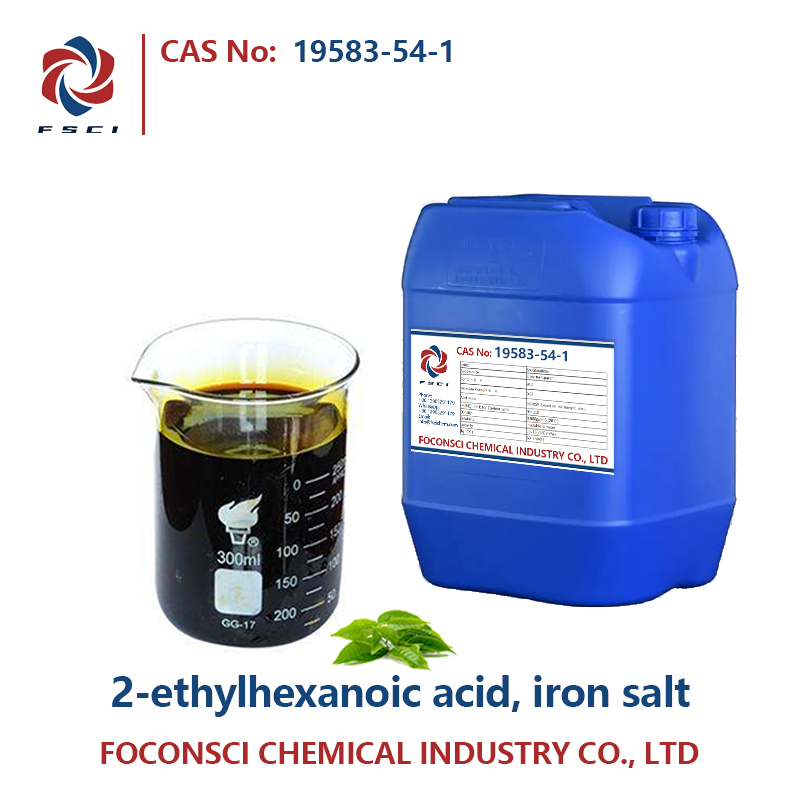Dans le domaine en constante expansion de la science des matériaux, il semble n'y avoir aucune limite extérieure à la recherche du prochain matériau meilleur ou plus durable. Parmi les deux classes d'additifs qui améliorent considérablement les performances des matériaux ou leurs propriétés, les stabilisants à la lumière et les plastifiants font partie des composants les plus importants. Néanmoins, bien que ces deux éléments soient utilisés séparément, leur utilisation en combinaison permet d'obtenir de meilleurs matériaux qui sont à la fois solides et flexibles. Le but de cet article est d'examiner les performances des stabilisants à la lumière et des plastifiants de Foconsci Chemical Industry Co., Ltd., les avantages particuliers qui peuvent être attribués à chacun et pourquoi leur combinaison est très utile dans l'industrie moderne des matériaux.
Comprendre les stabilisateurs de lumière
Les stabilisateurs de lumière sont des composés qui sont en particulier les substances les plus souvent responsables de la protection des polymères, des plastiques ou d'autres matériaux contre la dégradation par les UV, une cause fréquente de dégradation d'un matériau, en particulier dans les polymères et les plastiques. Outre ce processus de « vieillissement », l'application de mesures préventives telles que la photo-activation peut entraîner une photo-dégradation des matériaux affectés, comme une décoloration, une perte de résistance mécanique et une fragilité. Un stabilisateur de lumière filtre le rayonnement UV ou favorise la stabilisation des radicaux libres formés par l'exposition au rayonnement UV.
Les stabilisateurs de lumière à base d'amines encombrées et les absorbeurs d'UV sont les deux types les plus courants de stabilisateurs de lumière. Les composés absorbant les longueurs d'onde tels que les benzotriazoles et les benzophénones en font partie, absorbant le rayonnement UV et le transformant en énergie moins nocive. Les stabilisateurs de lumière à base d'amines encombrées, quant à eux, fonctionnent en absorbant les radicaux libres qui se forment à la suite de la dégradation par la lumière, empêchant ainsi une détérioration supplémentaire du matériau.
Le rôle des plastifiants
Les plastifiants appartiennent également à une autre classe d'additifs et sont principalement ajoutés pour améliorer la flexibilité, la maniabilité et la souplesse des matériaux, en particulier des plastiques. Ils agissent donc en s'insérant entre les chaînes polymères, ce qui entraîne une réduction des forces intermoléculaires et une augmentation de la distance entre les chaînes, ce qui rend le matériau moins dur et moins cassant.
Les plastifiants, quant à eux, comprennent les phtalates, qui sont les plus utilisés, bien que d'autres, comme les adipates, les citrates et les plastifiants d'origine biologique, deviennent populaires et sont respectueux de l'environnement et de la santé. Il convient de mentionner que la présence de plastifiants améliore considérablement les caractéristiques de performance des matériaux, ce qui permet aux produits souples et flexibles d'être adaptés à des utilisations durables telles que les câbles, les films et autres biens de consommation.
Avantages synergiques
Les stabilisants à la lumière et les plastifiants possèdent des propriétés individuelles, mais lorsqu'ils sont utilisés ensemble, leurs interactions synergiques prolongent encore la durée de vie et la facilité d'utilisation des matériaux. Il est donc nécessaire d'inclure des stabilisants à la lumière pour équilibrer ce risque.
Pour les formulations d'élastomères thermoplastiques biodégradables, l'utilisation de telles combinaisons d'additifs permet de protéger les composites de la dégradation due aux rayons ultraviolets du soleil ou à tout autre facteur destructeur pendant des durées plus longues.
Applications dans l'industrie
L'utilisation de stabilisants et de plastifiants à la lumière est répandue dans plusieurs secteurs, notamment l'automobile, la construction, l'emballage et les produits de consommation. Ces additifs sont extrêmement importants pour les éléments internes car ils permettent une protection supplémentaire contre la décoloration, les fissures ou l'usure générale. Dans la construction, ils sont utilisés dans les matériaux de revêtement, d'encadrement de fenêtres et de membrane de toiture pour assurer une protection solaire.
De tels ajouts sont également utiles pour différents types d'emballages ainsi que pour les matériaux d'emballage des aliments et des boissons. Ils servent à combler les vides et à préserver la transparence sans affecter la qualité du contenu. De plus, les produits de masse allant des sols aux jouets pour enfants l'utilisent pour une meilleure durabilité, même en cas d'utilisation intensive.
Défis et innovations
D'un autre côté, leurs avantages s'accompagnent de certaines limites, comme l'utilisation de stabilisants à la lumière et de plastifiants. Cette évolution s'est concentrée sur la reconnaissance des dangers potentiels, en particulier avec l'utilisation de certains plastifiants tels que les phtalates. Cela comprend des plastifiants à faible toxicité et biodégradables et des stabilisants à la lumière de nouvelle génération offrant de meilleures performances sans nuire à l'environnement.
Ils cherchent également à les utiliser avec ou sans ces additifs et la nanotechnologie pour créer un matériau plus résistant, plus résilient et plus efficace. De telles améliorations donnent l'espoir d'élargir l'utilisation de matériaux durables compte tenu des besoins croissants en matière de durabilité et de haute performance.
Conclusion
Il convient de noter que l'utilisation synergique de stabilisants à la lumière et de plastifiants est l'une des approches efficaces dans la recherche de matériaux durables. Ces additifs contribuent à la résistance aux rayons UV et améliorent la résilience structurelle du matériau, ce qui permet au matériau de résister à l'utilisation et aux conditions environnementales défavorables. À mesure que les études et la technologie améliorent la sécurité et l'efficacité des additifs, les limites de la création de matériaux plus avancés se multiplient. La synergie parfaite des stabilisants à la lumière et des plastifiants de Foconsci Chemical Industry Co., Ltd. est sans aucun doute la voie à suivre pour les matériaux du futur.


 EN
EN
 AR
AR
 BG
BG
 HR
HR
 CS
CS
 DA
DA
 NL
NL
 FI
FI
 FR
FR
 DE
DE
 EL
EL
 HI
HI
 IT
IT
 JA
JA
 KO
KO
 NON
NON
 PL
PL
 PT
PT
 RO
RO
 RU
RU
 ES
ES
 SV
SV
 TL
TL
 IW
IW
 ID
ID
 LV
LV
 LT
LT
 SR
SR
 SK
SK
 VI
VI
 HU
HU
 TH
TH
 TR
TR
 GA
GA
 CY
CY
 KA
KA
 LA
LA
 MN
MN
 KK
KK
 LB
LB


